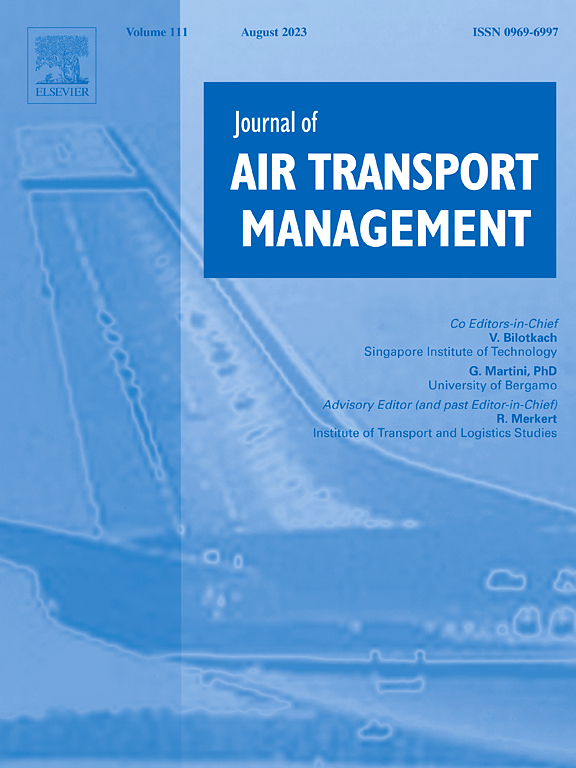A systematic review of general aviation accident factors, effects and prevention
IF 3.6
2区 工程技术
Q2 TRANSPORTATION
引用次数: 0
Abstract
General aviation, which comprises civilian aviation but excludes scheduled airline services and commercial air transport operations, continues to carry a poor safety record with a significantly higher accident rate compared to that of commercial aviation. This systematic literature review examined 46 studies to identify the most prominent causal and contributing factors to fixed-wing general aviation accidents, as well as effective measures to improve safety. Thematic analysis revealed five key themes: Human Factors (26), Training Deficiencies (21), Aircraft Characteristics (13), Pilot Characteristics (11), and Phase of Flight (9). Flight in low visibility conditions, such as instrument meteorological conditions (IMC) or night flight were consistently associated with increased fatality risk. Pilots operating under visual flight rules (VFR) without an instrument rating were especially vulnerable during inadvertent IMC encounters. Training deficiencies were another key factor, especially the lack of recurrent training in emergency procedures. Accident risk was also higher during specific flight phases: take-off, landing, and low-altitude manoeuvring were frequently associated with fatal stall/spin events due to minimal recovery margins. To mitigate these risks, targeted recurrent training is essential. Routine practice with certified flight instructors, alongside the use of approved flight simulators and distance learning, can improve both technical and non-technical pilot proficiency. Future research should investigate improved training methods, including the use of emerging technologies such as virtual and augmented reality, to enhance skill retention and reduce accident rates in general aviation.
通用航空事故因素、影响及预防的系统综述
通用航空包括民用航空,但不包括定期航空服务和商业航空运输业务,其安全记录仍然很差,事故率明显高于商业航空。本文对46项研究进行了系统的文献回顾,以确定固定翼通用航空事故最突出的因果和促成因素,以及提高安全的有效措施。专题分析揭示了五个关键主题:人为因素(26)、训练不足(21)、飞机特性(13)、飞行员特性(11)和飞行阶段(9)。在低能见度条件下飞行,如仪表气象条件(IMC)或夜间飞行,始终与死亡风险增加有关。飞行员在目视飞行规则(VFR)下操作,没有仪表评级,在无意的IMC遭遇中特别脆弱。缺乏培训是另一个关键因素,特别是缺乏应急程序方面的经常性培训。在特定的飞行阶段,事故风险也更高:起飞、着陆和低空操纵经常与致命的失速/旋转事件相关,因为恢复余地很小。为了减轻这些风险,有针对性的经常性培训是必不可少的。与持证飞行教官一起进行常规练习,同时使用经批准的飞行模拟器和远程学习,可以提高飞行员的技术和非技术熟练程度。未来的研究应调查改进的培训方法,包括使用虚拟和增强现实等新兴技术,以提高通用航空的技能保留和降低事故率。
本文章由计算机程序翻译,如有差异,请以英文原文为准。
求助全文
约1分钟内获得全文
求助全文
来源期刊

Journal of Air Transport Management
TRANSPORTATION-
CiteScore
12.40
自引率
11.70%
发文量
97
期刊介绍:
The Journal of Air Transport Management (JATM) sets out to address, through high quality research articles and authoritative commentary, the major economic, management and policy issues facing the air transport industry today. It offers practitioners and academics an international and dynamic forum for analysis and discussion of these issues, linking research and practice and stimulating interaction between the two. The refereed papers in the journal cover all the major sectors of the industry (airlines, airports, air traffic management) as well as related areas such as tourism management and logistics. Papers are blind reviewed, normally by two referees, chosen for their specialist knowledge. The journal provides independent, original and rigorous analysis in the areas of: • Policy, regulation and law • Strategy • Operations • Marketing • Economics and finance • Sustainability
 求助内容:
求助内容: 应助结果提醒方式:
应助结果提醒方式:


